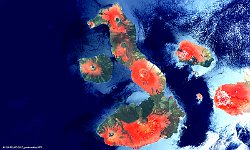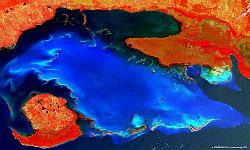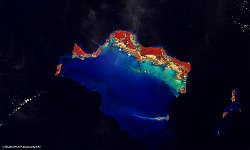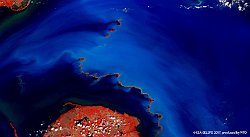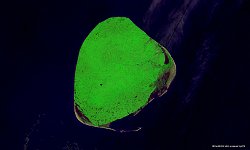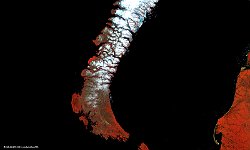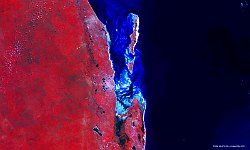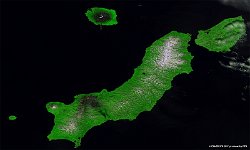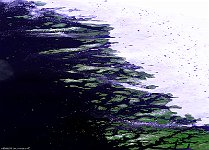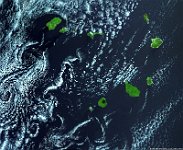1 / 19
Galapagos Islands, Ecuador
In the Pacific Ocean, to the west of the South American continent, and straddling the Equator, PROBA-V spotted the internationally protected, volcanic archipelago of the Galápagos and the surrounding marine reserve. The archipelago is renowned for the many endemic species that were studied by Charles Darwin, directly contributing to his famous theory on evolution by means of natural selection.
In 1535, the Spaniard Tomás de Berlanga, fourth bishop of Panama, first visited these islands by chance when he was sailing to Peru. On the maps of Mercator and Ortelius, famous geographers, the islands were named Insulae de los Galopegos or Islands of the Tortoises after the giant tortoises found there.
This false colour composition highlights the vegetation (red) on the flanks of several volcanoes, in particular Wolf, Darwin, Alcedo, Santo Tomás and Cerro Azul volcanoes on Isla Isabella, the largest island.
Date: 27/02/2017
Resolution: 100m
